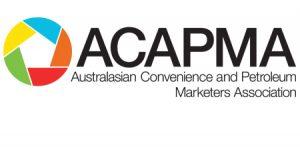 Corner stores once proliferated across the residential landscape of Australia’s towns and cities: places where kids congregated in front of gumball machines, keenly returning empty glass drink bottles to fund their weekly purchase of mixed lollies, and where households could conveniently buy small grocery items, cakes, smokes and an eclectic mix of other items, writes ACAPMA.
Corner stores once proliferated across the residential landscape of Australia’s towns and cities: places where kids congregated in front of gumball machines, keenly returning empty glass drink bottles to fund their weekly purchase of mixed lollies, and where households could conveniently buy small grocery items, cakes, smokes and an eclectic mix of other items, writes ACAPMA.
The growing prominence of supermarkets – and the Australian consumer’s desire for one-stop shopping – largely contributed to the demise of these outlets through the 1970s and ’80s.
But in an age of time-poor consumer behaviour, online shopping and sharp changes in the social structures of the nation’s households, there are signs that the corner store may be making a return to Australian communities.
“When you think about it, the fundamentals for the return of the corner store are already in place,” ACAPMA CEO Mark McKenzie said.
Changes in the structure of Australian households – with many now limited to singles or couples without kids – means that people are eating out more and need to visit a store only to buy basic food and grocery items.
A dramatic increase in the number of two-working-parent and single-parent households means that less time is available for the traditional weekly shop – so those in such households tend to shop in small lots more frequently.
“Growing community consciousness of the need to eat healthily is also generating increased demand for prepared food that is both convenient and healthy,” Mr McKenzie said.
But the general closure of the nation’s corner stores – and subsequent sale of these sites for redevelopment – has meant the opportunity for small-format stores to be conveniently located for residential communities has essentially been lost.
Or has it?
“ACAPMA believes that changing societal and consumer factors are driving a revolution in the petrol-convenience industry in Australia,” Mr McKenzie said.
With 6,700 sites strategically located in almost every community, service stations are perfectly positioned to take advantage of these changes in consumer behaviour.
“And many fuel-retail businesses are doing so with the launch of new convenience-style formats that include prepared food, deli items and café-style cakes and coffee,” Mr McKenzie said.
Some of the larger fuel-retail chains have launched exciting new convenience-store formats in recent years, including BP Australia, Coles Express, Puma Energy, Caltex and 7-Eleven.
Many medium-size and small retailers have also made the transition from the traditional ‘chips, chocs and drinks’ outlet to innovative formats that appear to take account of the specific demands of their local market.
As a result, many of these sites are fast becoming the place of choice for a quick café stop following school drop-off, or the preferred breakfast stop for tradies heading out for the day.
“The changes beg the question of whether the Australian consumer’s choice of a service-station outlet will remain solely about price and location – or whether we are in the middle of a quiet consumer revolution where consumer decisions will more likely be made on the value of the total petrol-and-convenience offering,” Mr McKenzie said.
In a bid to better understand the potential effects of these trends on future motorist behaviour, ACAPMA has recently commissioned the ‘2017 Monitor of Consumer Attitudes’ with a specific focus on the changing needs of petrol-convenience customers.
This work is being undertaken by independent survey firm Survey Matters and will canvass quantitative responses from 1,000 respondents on specific purchase behaviours, as well as collecting qualitative commentary from discrete consumer segments.
The results of this work will be released at the 2017 Asia Pacific Fuel Industry Forum to be held in Melbourne on September 13-14, with all delegates to receive a copy of the survey findings.
“The findings of the research will also inform ACAPMA’s annual public-policy review and guide future responses to public debates on the net value that is being delivered to the Australian community by the nation’s fuel retail industry,” Mr McKenzie said.
This is an edited version of an article originally circulated by ACAPMA on July 21, 2017.



